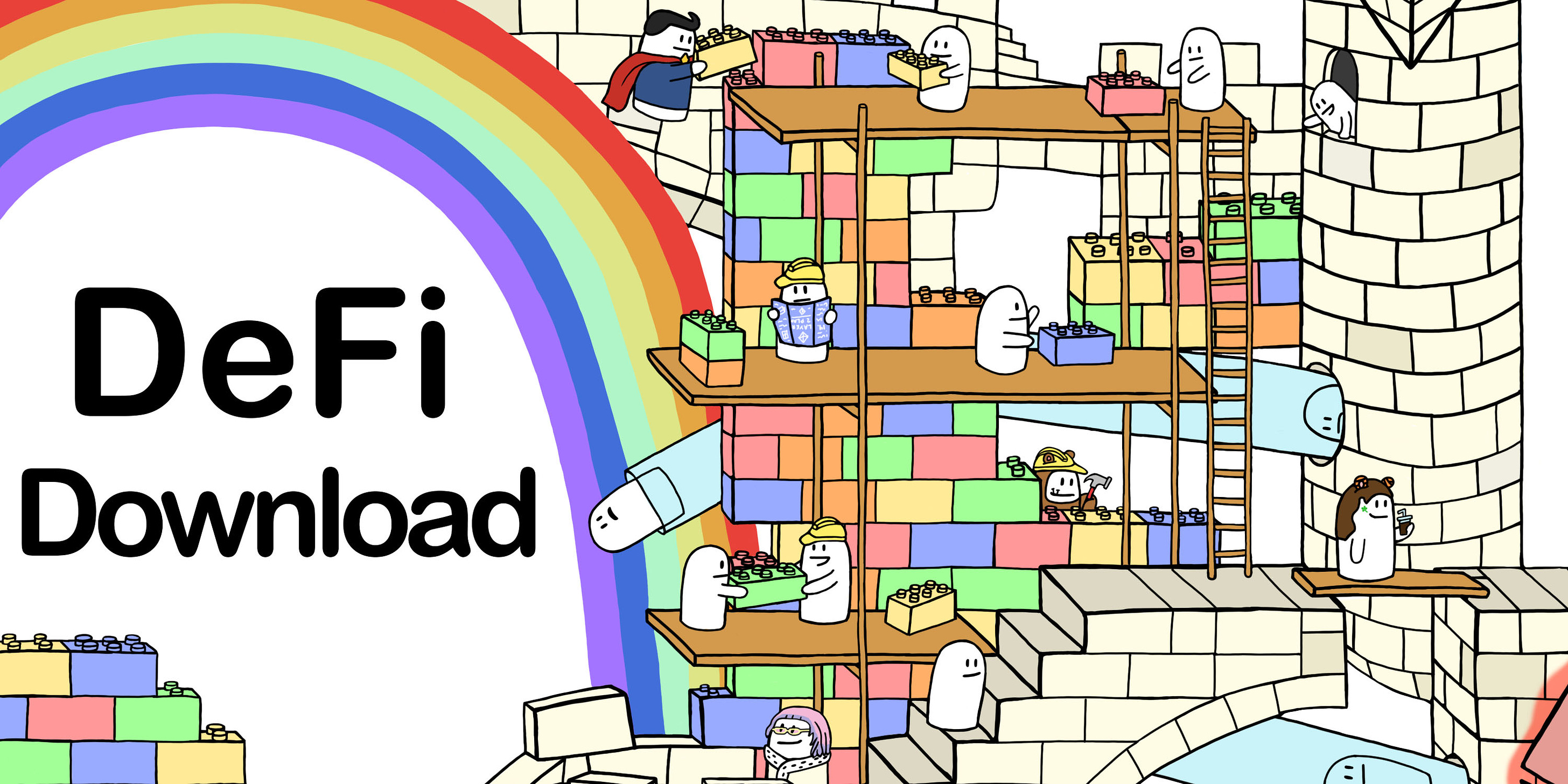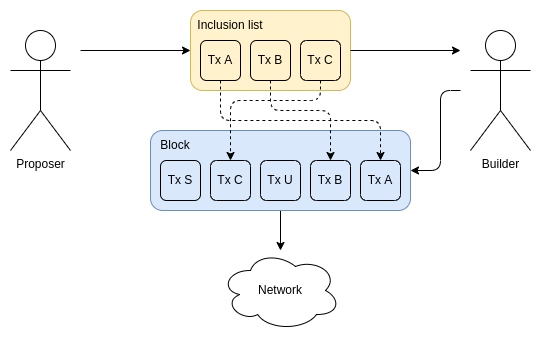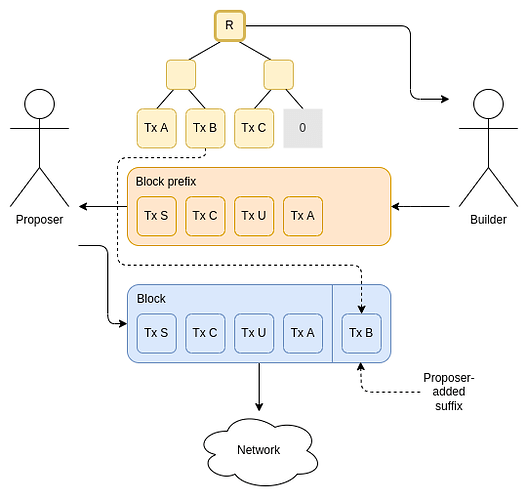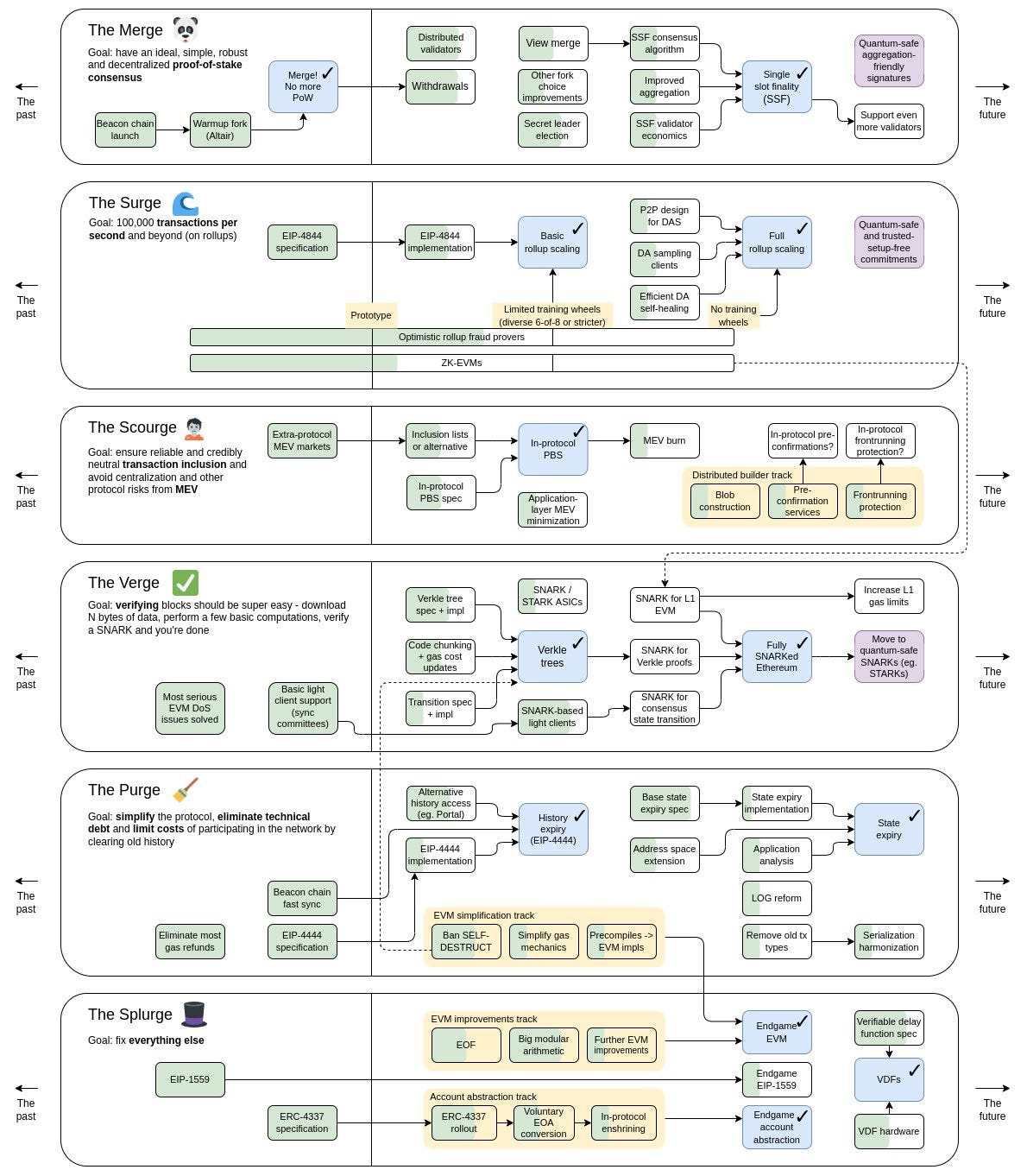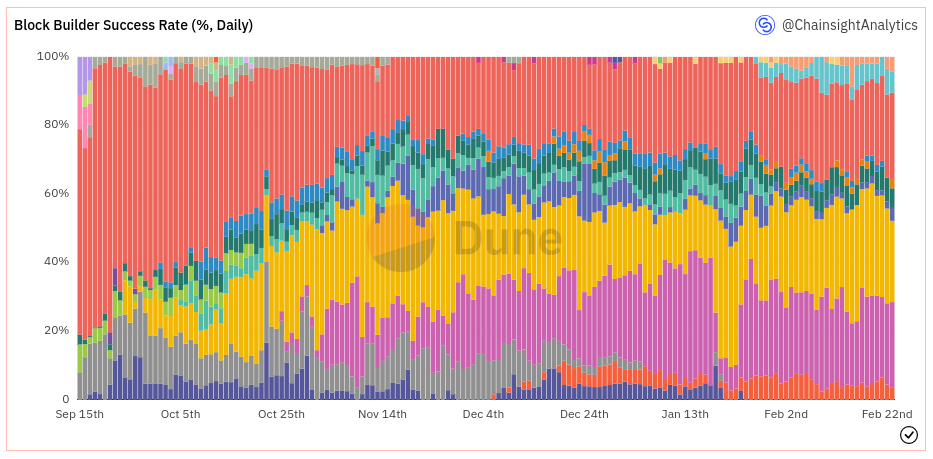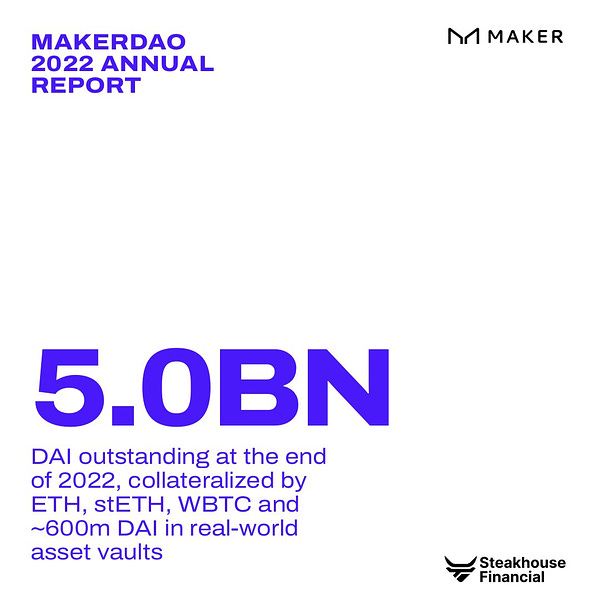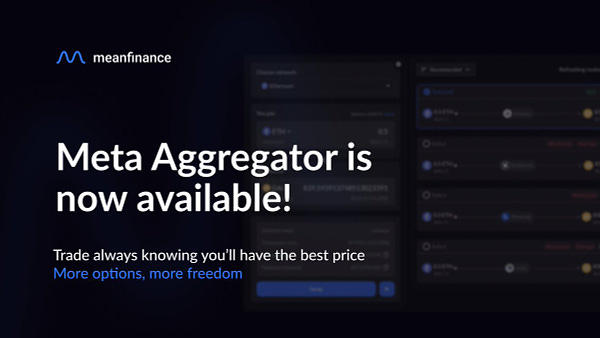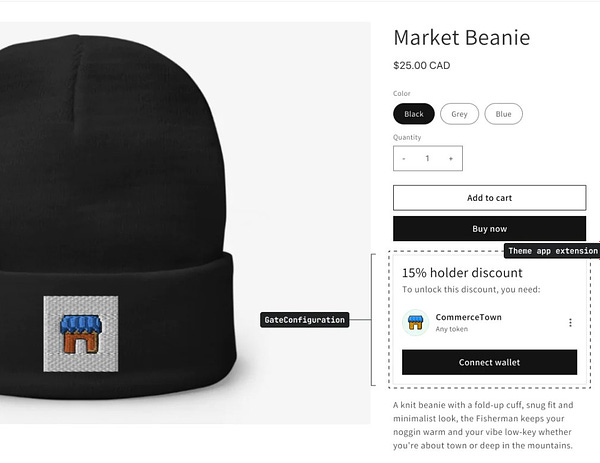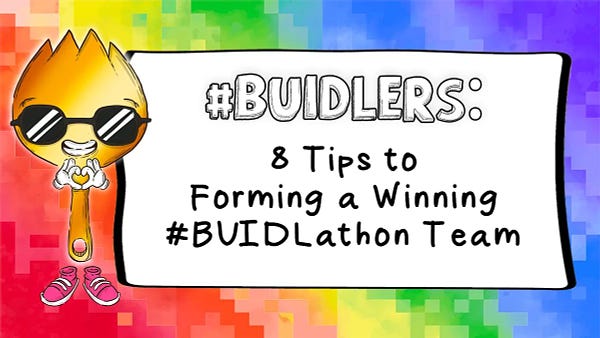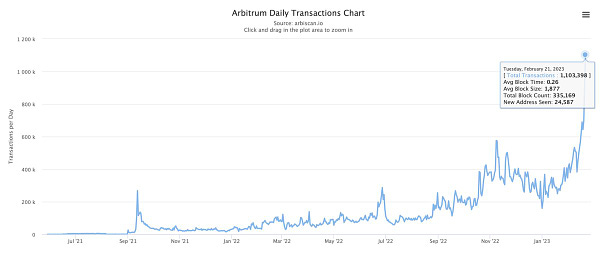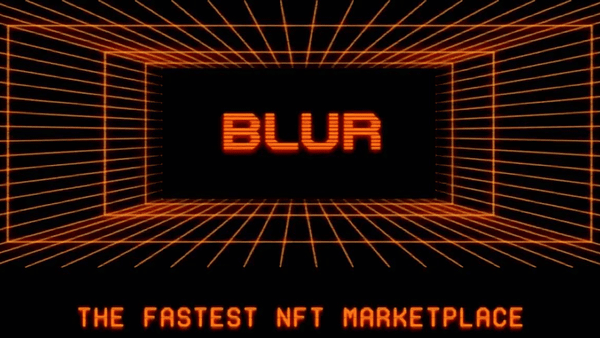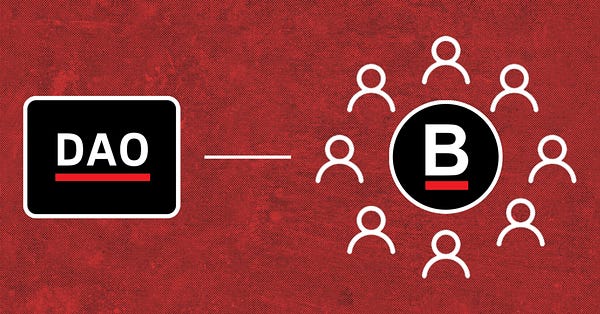Bankless DAO - The MEV Edition (part III)
The MEV Edition (part III)The Scourge; Inclusion Lists; MEV Burn; and the Health of the MEV-Boost EcosystemDear Bankless Nation 🏴, In this edition of the DeFi Download we dig into MEV. Particularly some of the in-protocol solutions to MEV and how that will affect ETH token holders and transactions. A lot has changed since our last edition on MEV, and we’re going to give you the down low on what’s going on. As always, we finish off the new Project Releases and Twitter chirps as a final dessert. Thank you for reading. This is definitely a more technical edition, so please let us know if you like this new style in the comments. We also have a temp check survey regarding a paid subscription. Our bi-weekly articles will continue to be free, but paid subscribers would get an additional 8 articles a month. This content would include more timely current events, token analysis, and the impact of web3 on the broader tech ecosystem. Please let us know if this interests you. Thank you for reading! Contributors: BanklessDAO Writers Guild (Jake and Stake, Austin Foss)
This is the official newsletter of BanklessDAO. To unsubscribe, edit your settings. If you found this content helpful, please let us know in the comments! We will continue to create a free article every two weeks, but also provide this extra value to paid subscribers. This content would include more timely current events, token analysis, and the impact of web3 on the broader tech ecosystem.
The MEV Edition (part III)Inclusion ListsAuthor: Jake and Stake The Scourge is Ethereum’s plan to ensure reliable and credibly neutral transaction inclusion. Essentially, solve MEV issues, censorship problems, and centralization risks throughout the stack. The goal is to reduce the power of MEV collectors (block builders and searchers) to censor transactions and limit the responsibilities of block proposers to ensure low barriers to become a validator—decentralize validators. Before we get into the meat of the topic, it’s important to understand Ethereum’s gas market. If you already have a good grasp, feel free to skip the following section. A Primer on GasBlock space is sold based on a specified gas target and a price for each unit of gas known as the base fee. Each transaction uses a certain amount of gas N and users pay for each unit of gas at a specified price. For a transaction to be included into a block it must have a gas fee greater than or equal to the base fee. A block is full when the gas limit has been reached (2x the target). As a refresher:
When the block size is larger than the target, the base fee for the next block will go up to reduce demand. If the block size is less, the base fee will be reduced to inspire demand. The following is an example scenario portraying increasing gas prices. For an in-depth look at the Ethereum gas market, check out our previous edition on EIP-1559 and visit ethereum.org. Partial Block AuctionsBlock size limits the number of transactions that can be included in a block. Given this constraint, we can only include valid transactions that fall under this limit. Partial block auctions allow builders to construct most of the block, but if the block cannot be completely filled, the block proposer will require them to include certain transactions. There are three scenarios as a result of this change:
But there are still some drawbacks. If the builder identifies transactions in the inclusion list that they do not want to build on, they can refuse to build blocks for that proposer. However, proposers want the maximum fees possible and block builders can create blocks with the most fees. To incentivize builders to create blocks for them, proposers could have empty inclusion lists to ensure receiving a valuable block. Still, this can be partially offset by encouraging block proposers to have a fallback block building mechanism, but this could encourage proposers and builders to vertically integrate. Another drawback is that the proposer would have to identify fee paying transactions. This would require access to the mempool and the EVM state. Hence, no stateless clients, a long standing Ethereum upgrade to increase client decentralization through the reduction of hardware requirements. Note that the builder can still capture MEV through sandwich attacks, so there’s no protection for that. Proposer SuffixesOne solution to builders withholding blocks is to have the proposer add inclusion-list transactions to the end of submitted blocks. While this avoids one problem, there are similar drawbacks to inclusion lists:
Fix to Proposer Suffixes: Pre-commitmentIn the final iteration of inclusion lists, the proposer pre-commits a set of transactions that they want to include using a Merkle tree or KZG commitment. The builder then creates their block, which may or may not include committed transactions. If there’s enough space, the proposer adds the suffix of committed transactions not included by the block builder. As a result, the proposer still receives the blocks created by builders and can simply append the inclusion list transactions to the end of the block given enough space. This way, the builder does not know the contents of the proposer’s inclusion list. Inclusion List ConclusionIn reducing the censorship power of block builders and the responsibilities of block proposers, several tasks will remain unallocated:
Vitalik has proposed creating a third actor to perform these tasks with such an actor having no ability to choose block contents. This is a cutting edge of Ethereum, so be on the lookout for future updates. MEV BurnAuthor: Jake and Stake MEV Burn is a proposal by Domothy. Here’s the problem: MEV can lead to centralization of block proposers, increasing censorship risk and concentration of network stake. The protocol’s goal is to reward network participants in proportion to their stake in the network. Further, the proposal aims to reduce incentives for centralizing. As it stands, more block proposals means more MEV, so each validator is incentivized to increase the number of blocks they propose. If we can, reduce MEV-based income so in-protocol emissions are the primary reward. This will make the incentives for validating smoother, more predictable, and easier to reason about. Core idea: Let block proposers compete with each other to propose a block. The design of MEV Burn involves sampling a random set of validators during each slot and each validator in the sample competes for the right to propose a new block. The validator that can burn the most ETH that gets to propose the new block. This is the equivalent of MEV-smoothing (averaging MEV rewards across all validators), but for all ETH holders, not just validators. Everyone gets the benefits of MEV. This also means MEV will always be transmuted into ETH, even if the arbitrage opportunity doesn’t involve ETH. MEV must be paid for in ETH, and the value of that ETH is redistributed to all holders via reduced supply (burn). While the implementation details are still being worked on, the proposal includes increasing block time by 4 seconds (from 12 to 16 seconds) to allow proposers time to submit their bids. Each proposer only gets one bid, so it’s in their best interest to bid as close to the MEV total as possible. During the process, each eligible proposer must precompute a block and submit its block hash in order to be accepted as valid. One side effect is the prevention of block proposers from affecting the liveness of the chain by submitting bids too late, because many eligible proposers reduces the probability of a late block. CollusionEligible proposers can collude together to make a 0 gwei bid and share the MEV profits amongst themselves. However, it only takes one defector to nullify this threat. If the defector bids 1 gwei, they will earn all of the profits, if there are two defectors they’re each incentivized to bid as close to the MEV total as possible. If a single entity does control all of the validators for a single slot, they may collude. However, if the pool of eligible proposers is not uniform, the entity cannot know whether there exists another eligible validator. This would also solve some concerns with inclusion lists. Remember that censoring block builders could refuse to build blocks for non-censoring proposers? In this design, block builders wouldn’t know who the next validator is, and would thus not be able to coordinate a targeted withholding. The winning proposer could add transactions to their inclusion and keep Ethereum credibly neutral. Note that eligible proposers must be secret. If not, this could lead to collusion. In fact, proposers are even more incentivized to include inclusion list transactions in order to maximize the probability of winning the bid. Potential DrawbacksValidators must commit to calculating and accepting MEV. If they do not, they will not be able to propose blocks, resulting in something of a soft-fork. Additionally, this incentivizes proposers to become more specialized entities and to become “better validators”, increasing the barriers to entry and thus centralization risks PBS tries to mitigate. Entities with more validators will be able to undercut competitors to capture smaller rewards or otherwise run many validators on the same hardware. There may be colocation, both pieces of software running in the same datacenter or on the same server, between block builders and block proposers. As the design exists today, proposers can submit their blocks any time within the 4 second auction. If the proposer waits to submit their proposal, they can add more MEV opportunities and collect a larger reward or have a greater probability of winning the auction. As a result, block proposers want to create blocks as late as they can without being so late that they’re ineligible to submit their block. The block proposer can improve their latency by colocating closer to MEV relays/builders and other nodes (forms of centralization). The block reward will be included in the profitability calculation, resulting in it being burned. This has the effect of reducing Ethereum’s security budget as proposers overbid to earn a smaller reward. Denial of Service (DoS) attacks. Eligible proposers are revealed when they broadcast their bid. So, a losing bidder could DoS attack the winning bidder before they reveal their block in order to collect the rewards as the fallback. The counterargument is that the cost of operating a DoS attack will outweigh the profitability of proposing the block, because most of the earnings are burned. Again, this is the cutting edge of Ethereum and research is still ongoing. We’ll see more updates to come. MEV-Boost Ecosystem HealthAuthor: Austin Foss In a previous issue of The DeFi Download from November last year, MEV Part II, we mapped out the MEV ecosystem at the time and the challenges it was facing; fears of censorship and inevitable centralization. Back then, the merge was only two months prior and the MEV ecosystem was very young and relatively speaking it still is, approaching just six months old. Now we're going to revisit the topic to see how the landscape has changed. Healthy MEV?In the past MEV has been looked at as an existential risk and centralizing force against the network. As the merge approached and PoS transformed Ethereum, attitudes around MEV shifted towards acceptance and eventually settled on viewing it as ultimately beneficial for the network.
If MEV can be good for the network what makes a healthy MEV ecosystem? An unhealthy one would amplify the negative risks of MEV:
Relayer Builder SymbiosisAs a quick refresher, Flashbots, "a research and development organization", is the team behind developing the MEV-Boost Relayer software. Their model uses two roles, builders and proposers/relayers. An Ethereum validator running the MEV-Boost relay software is the proposer, and builders submit blocks to them. Relayers are temporary until proposer builder separation (PBS) is enshrined in the protocol. Inevitable Centralization?In his blog post titled "End Game", from December 2021, Vitalik made a case for why block builder market will likely lead to "a high chance that block production will end up centralized..." but goes on to say that we can use "protocol-level techniques... to "regulate" this market, ensuring that the winners cannot abuse their power." According to Vitalik's most recent roadmap, as part of "The Scourge", a spec for PBS will come about around the time proto-danksharding (EIP-4844) is implemented, with PBS being implemented sometime afterwards. Given this approximate timeline, the current model for the MEV ecosystem will be around for at least another year. Initially, the Flashbots MEV model was showing signs of trending towards centralization, their relay reaching a peak market share of about 80% of all MEV-Boost transactions following the merge. Just one month later reports were showing that this had declined to 51%. Using a new tool called Relay Scan developed by Flashbots team member Chris Hagar we can see up to date, real-time, data on the state of the MEV-Boost Ecosystem. At the time of writing, Flashbots' relay is down to just under 40% of the MEV-Boost market, with second place going to Bloxroute having a combined market share of ~24%, followed by Ultrasound.money at 20%. That's ~84% of all MEV-Boost volume going through 3 relays. Also at the time of writing, the MEV-Boost overall inclusion rate is ~80%, so with 40% of MEV-Boost market Flashbots facilitates, that's 32% of all Ethereum mainnet transactions. When it comes to the builders, Flashbots open sourced this piece of software a little after their relay software in November 2022, Relay Scan shows four of these operators above 10% and further 6 above 1%. Censorship ResistanceAround the time of the merge, discussion on the topic of censorship was on everyone's mind. Not only were the MEV dynamics shifting along with the move to PoS, but the US Office of Foreign Assets Control (OFAC) and recently sanctioned the TornadoCash project leading to the legacy MEV model, using MEV-Geth, and the closed source Flashbots relay censoring TornadoCash related addresses. Built by Australian "Blockchain development agency", LABRYS, MEV Watch is a tool for monitoring how OFAC compliant Ethereum's validators are. At the time of writing, since the merge, 45% of blocks were OFAC compliant. MEV End GameAlthough Vitalik predicts that block builders will inevitably centralize, but right now the ecosystem is trending towards more decentralization for the time being. It is important to note that his argument for why builders would centralize has a lot to do with cross-domain (cross-rollup) MEV and the wider implications of Ethereum's scaling plans on the MEV market, so his prediction may still prove accurate. Even if this were to happen it wouldn't be the end of the world. A centralized block builder market, according to Vitalik, would still result in "block validation [being] trustless and highly decentralized, and censorship [would still be] prevented." This would still fit the definition of a healthy MEV ecosystem according to the six points mentioned at the beginning, it just wouldn’t fit an idealistic vision of Ethereum where absolutely everything is decentralized. MEV's final form and enshrined PBS are yet to come and nothing is set in stone just yet. Action Steps📖 Read The MEV Edition (part I) | DeFi Download 📖 Read The MEV Edition (part II) | DeFi Download ⛏️ Dig into Burning MEV through proposer auctions | Domothy 🎧 Listen Flashbots Saves Crypto with Stephane Gosselin | Bankless Shows Project Releases 🎉
MakerDAO releases 2022 annual report
 How did MakerDAO do in 2022? A review of some of the key financial results. Many thanks to reviewers across the community and to the Strategic Finance Core Unit at MakerDAO for putting this together
forum.makerdao.com/t/makerdao-202… Arbitrum announces Stylus to launch this year
 🥳 Attn Devs:
Stylus is on its way!💙🧡
Join the brilliant @CryptoIsCute for the unveiling of Stylus, Arbitrum's next-gen programming environment deploying later this year—and learn why we say it’s “EVM+.”
offchain.medium.com/hello-stylus-6…
Announcement highlights🧵👇 Element releases AMM Hyperdrive
 1/ Using the core DeFi block @MakerDAO, Spark and Element Finance are coming together to build out a new fixed rate lending product. Spark Protocol will be using Hyperdrive, Element’s new AMM.
Learn more ⬇️
InfinityPools
Mean Finance releases Meta Aggregator
 Well fam, we are very proud to announce something we've been working on for quite some time
Introducing our new Meta Aggregator! 🔥
- 22 chains
- 9 different sources
- Transaction simulation
- Buy orders
- Swap & transfer
- No extra fees
Just jump to mean.finance/swap 🚀 Synthetix V3 launch
Shopify has added Sign-in with Ethereum
Token Terminal introduces Financial Statements for DAOs
 1/ Introducing Financial statements for DAOs 🚨
A new era in fundamentals-based cryptoasset investing has begun! 🧵⤵️ Chirping Birds
 I have a theory:
Regulators let the bad guys get big and blow up because it serves their agenda.
1. destroy capital/resources in crypto ecosystem
2. burn people, deter adoption
3. give air cover to attack good actors
The bad guys are actually on-side. Good guys are the enemy.  CryptoSlate @CryptoSlate  Imo this is one of the most interesting discussions in tech policy. I disagree. Bitcoin made possible online what has always been possible in person. Therefore it's not a novel change to society so much as a return to older ways of being.  Tom Trevethan @TTrevethan  You need a state to fight a state.
US states like Wyoming, Tennessee, Mississippi, Montana are passing bills in support of DAOs & mining.
Meanwhile, foreign states like El Salvador, Palau, UAE are recruiting crypto founders.
Sanctuary states for innovation.
Inside and outside.  RYAN SΞAN ADAMS - rsa.eth 🏴🦇🔊 @RyanSAdams  1. Coming to the #BUIDLathon alone is completely acceptable
2. Find #BUIDLers to connect with.
3. Connect with developer meetup groups, other like-minded communities, and @SporkDao
4. Ensure that your team has diverse strengths and backgrounds  HOLY CRAP!!! Arbitrum just flipped #ethereum for daily transactions! It did 1.1 million on the 21st, and ETH 1.08 million.
ETH is scaling!  .@blur_io has surpassed OpenSea to become the largest NFT marketplace.
Its airdrop has fueled an incentive flywheel to create real network effects.
Blur has achieved 53% market share within a few months of launch, here's how they did it: 🧵⬇️  Getting lots of questions re stablecoins & SEC: Facts & circumstances of course, but SEC should defer to Congress, which is actively considering the issue. In the meantime, we & other regulators could hold public roundtables. Enforcement actions aren't the way to write the rules. 🛠 BANK Utility (BanklessDAO token)With over 5,000 holders, BANK is one of the most widely held social tokens in crypto. So it bears asking, where are the best places to put our BANK to use? The five protocols below will allow you to deposit BANK in a liquidity pool and earn rewards. To get going, just click on the name, connect to the app, filter by BANK, and start earning passive income.  Resident tokenomist @ffstrauf turns inward, analyzing BanklessDAO's $BANK token and showing us how a movement becomes an incentivized community of buidlers (Cov @dippudo) ⚖️ BalancerBalancer has two 80/20 liquidity pools, meaning that you are required to deposit 80% BANK and 20% ETH in the pool. There is one pool on Ethereum and another on Polygon. Once you’ve provided liquidity, you’ll receive LP tokens. Keep an eye out for opportunities to stake these LP tokens. There is nearly 500,000 USD in the two Balancer liquidity pools. 🍣 SushiSwapSushiSwap has a 50/50 BANK/ETH pool. As with Balancer, you will receive LP tokens, and while you can’t stake them on SushiSwap’s Onsen Farm yet, you may be able to in the future. Liquidity providers earn a .25% fee on all trades proportional to their pool share. The SushiSwap pool has a little over 100,000 USD in liquidity. ⏛ Rari Fuse Pool- Deprecated SoonThis will be deprecated soon. The Rari Fuse Pool allows you to borrow against your BANK or earn huge APY by providing assets like DAI to the pool. At present, all borrowing is paused for this pool. There is over 450,000 USD deposited in the Pool 🦄 UniswapThe Uniswap V3 liquidity pool is 50/50 BANK/ETH, and provides a price oracle for the Rari Fuse Pool. By depositing in the Uniswap pool, you can earn fees and help enable borrowing on Rari. This pool currently has over 500,000 USD in liquidity. 🪐 ArrakisYou can also provide liquidity to the Arrakis Uniswap V3 pool. The ratio is about 2/1 BANK/ETH. This pool is new, and only has a bit more than $6,000 in liquidity. In the future, you may be able to stake your BANK/ETH LP tokens within the protocol to earn additional rewards. Get Plugged In🧳 Job OpportunitiesGet a job in crypto! Do you like solving hard problems, care about building more efficient markets for everybody, and want to work at the frontier of decentralized finance? Rook is looking for full time contributors, with salaries ranging from $169,000-$722,000. There are positions ranging from engineering, recruiting, product marketing, copywriting, and design. Sound interesting? Sign up for our referral program and go full-time DAO.
|
Older messages
Matty from Metakey on the Metaverse | Decentralized Arts
Wednesday, February 22, 2023
Dear Bankless Nation, Last week, we watched gas fees skyrocket on Ethereum Mainnet. The last time fees became prohibitively high was during Yuga Labs' Otherside metaverse launch. This time? The
Season 6: Relivin’ the Ride | BanklessDAO Weekly Rollup
Saturday, February 18, 2023
Catch Up With What Happened This Week in BanklessDAO
DAOs as Hedge Funds | State of the DAOs
Friday, February 17, 2023
You're reading State of the DAOs, the high-signal low-noise newsletter for understanding DAOs.
The Checks | Decentralized Arts
Wednesday, February 15, 2023
Dear Bankless Nation, If there's one word that can succinctly encapsulate all of the action, attention, and progress happening in the NFT space, it's INNOVATION. Brands and artists alike are
Of Cypherpunks and Crypto Predictions | Bankless Publishing Recap
Tuesday, February 14, 2023
Top-shelf Educational Web3 Content Shipped Directly to Your Inbox
You Might Also Like
FBI confirms North Korea-backed Lazarus hackers stole $1.5 billion from Bybit
Thursday, February 27, 2025
FBI tracks Ethereum laundering spree by North Korean hackers amid rising threat of cyber warfare in the crypto world. ͏ ͏ ͏ ͏ ͏ ͏ ͏ ͏ ͏ ͏ ͏ ͏ ͏ ͏ ͏ ͏ ͏ ͏ ͏ ͏ ͏ ͏ ͏ ͏ ͏ ͏ ͏ ͏ ͏ ͏ ͏ ͏ ͏ ͏ ͏ ͏ ͏ ͏ ͏ ͏ ͏ ͏
Interview with MicroStrategy Founder Michael Saylor: The Company Holding the Most Bitcoin in the World
Thursday, February 27, 2025
In this interview, Colin from WuBlockchain had an in-depth discussion with MicroStrategy founder Michael Saylor about the company's ongoing Bitcoin acquisition strategy, the growing adoption of
Abu Dhabi Invests $436.9M In Bitcoin ETF
Thursday, February 27, 2025
February 17th, 2025 Sign Up Your Weekly Update On All Things Crypto TL;DR Abu Dhabi Invests $436.9M In Bitcoin ETF Changpeng Zhao Sparks Meme Coin Rumours Coinbase Finally Lists POPCAT & PENGU
📈 BTC’s realised price (average acquisition price) reached an all-time high of $43,000; State of Wisconsin Invest…
Thursday, February 27, 2025
BTC's realised price reached an all-time high of $43000; Abu Dhabi's Mubadala Investment disclosed its BTC ETF holdings; South Korea to allow universities and charities to sell crypto donations
HashKey Exchange's Interpretation of the Hong Kong SFC Virtual Asset Roadmap
Thursday, February 27, 2025
We are pleased to see the Hong Kong government release the forward-looking and pragmatic “ASPI-Re” roadmap for advancing the virtual asset industry. ͏ ͏ ͏ ͏ ͏ ͏ ͏ ͏ ͏ ͏ ͏ ͏ ͏ ͏ ͏ ͏ ͏ ͏ ͏ ͏ ͏ ͏ ͏ ͏ ͏ ͏
Argentina’s stock market plummets amid President Javier Milei’s LIBRA memecoin scandal
Thursday, February 27, 2025
Argentina's economic landscape shaken as Milei's LIBRA endorsement turns into multi-billion dollar fiasco. ͏ ͏ ͏ ͏ ͏ ͏ ͏ ͏ ͏ ͏ ͏ ͏ ͏ ͏ ͏ ͏ ͏ ͏ ͏ ͏ ͏ ͏ ͏ ͏ ͏ ͏ ͏ ͏ ͏ ͏ ͏ ͏ ͏ ͏ ͏ ͏ ͏ ͏ ͏ ͏ ͏ ͏ ͏
Heated AMA Debate: 0G Team Responds to Allegations of CFX Soft Rug, Overvaluation, and Token Commitment Concerns
Thursday, February 27, 2025
This AMA primarily focused on the relationship between Conflux and 0G Labs, discussing 0G Labs' high valuation, fundraising structure, technical direction, and community concerns over transparency.
Pectra: Ethereum’s Next Major Upgrade
Thursday, February 27, 2025
Breaking down key changes included in Ethereum's Pectra hard-fork ͏ ͏ ͏ ͏ ͏ ͏ ͏ ͏ ͏ ͏ ͏ ͏ ͏ ͏ ͏ ͏ ͏ ͏ ͏ ͏ ͏ ͏ ͏ ͏ ͏ ͏ ͏ ͏ ͏ ͏ ͏ ͏ ͏ ͏ ͏ ͏ ͏ ͏ ͏ ͏ ͏ ͏ ͏ ͏ ͏ ͏ ͏ ͏ ͏ ͏ ͏ ͏ ͏ ͏ ͏ ͏ ͏ ͏ ͏ ͏ ͏ ͏ ͏ ͏ ͏ ͏
Solana falls to lowest price since November 2024 losing 43% since January
Thursday, February 27, 2025
Volatility reigns as Solana's price retreat tests its resilience against past support levels. ͏ ͏ ͏ ͏ ͏ ͏ ͏ ͏ ͏ ͏ ͏ ͏ ͏ ͏ ͏ ͏ ͏ ͏ ͏ ͏ ͏ ͏ ͏ ͏ ͏ ͏ ͏ ͏ ͏ ͏ ͏ ͏ ͏ ͏ ͏ ͏ ͏ ͏ ͏ ͏ ͏ ͏ ͏ ͏ ͏ ͏ ͏ ͏ ͏ ͏ ͏ ͏
Five Projects with Real-World Revenue Scenarios Utiling Token Empowerment
Thursday, February 27, 2025
Memecoin once captured significant attention and investment with its unique culture, humorous image, and community-driven characteristics. ͏ ͏ ͏ ͏ ͏ ͏ ͏ ͏ ͏ ͏ ͏ ͏ ͏ ͏ ͏ ͏ ͏ ͏ ͏ ͏ ͏ ͏ ͏ ͏ ͏ ͏ ͏ ͏ ͏ ͏ ͏
